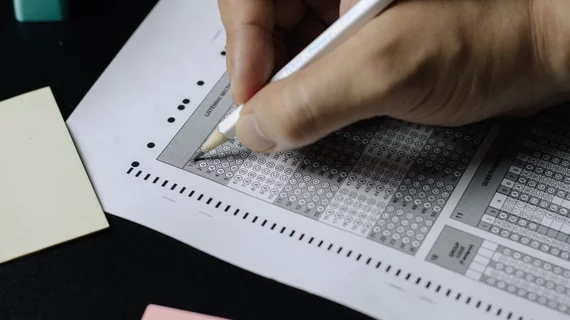Cardiology board fail rates are increasing—can educators reverse that trend?
More and more fellows are failing the American Board of Internal Medicine (ABIM) subspecialty examination in cardiovascular disease, according to a new commentary published in the Journal of the American College of Cardiology.[1]
While 96% of first-time test takers passed the exam in 2018, that number dropped all the way to 86% in both 2021 and 2022. The authors agree that the lengthy COVID-19 pandemic played a significant role in this trend, both in its immediate impact and the way it disrupted in-person learning for a considerable length of time.
“The consequences of the educational disruptions in cardiology over the past three years are just now becoming bluntly apparent,” wrote first author A. John Kadado, MD, an electrophysiology fellow with the Yale School of Medicine. “Looking back, the structural changes in fellowship education induced by COVID affected almost all aspects of learning—including truncated physical examinations, abbreviated rounds, remote imaging interpretation with little direct oversight, and reduced procedural volumes. Academic emergency measures led to months of canceled conferences, grand rounds and national meetings, and didactic learning shifted to virtual conferences in which attention is easily diverted to other tasks. Moreover, the psychologic burden of fear concerning COVID increased anxiety, especially among healthcare workers, and sapped energy for self-directed learning.”
Kadado et al. also noted that the ABIM does not appear to be to blame for this shift. The organization actually made changes in 2015 that were linked to improved satisfaction and reduced irritation among individuals taking the test.
“Most important, there have not been major changes to the examination over the past six years, so the text itself seems unlikely to explain the decline,” the group wrote.
5 ways educators can help test scores improve
The authors provided a full list of ways educational programs can help cardiology fellows do better in the future. These are five of their most noteworthy recommendations:
1. Evaluate faculty for signs of burnout.
“Invest in faculty development and assure that they are engaged in meaningful teaching activities,” the authors wrote. “Assure that the program director has adequate protected time to oversee fellowship activities.”
2. Try to shift fellows back toward in-person learning and participating more regularly in industry conferences.
3. Develop checklists, curriculums and other resources to make sure fellows are learning what they need to know.
“Ensure meaningful biannual check-ins with fellows to track milestones and procedure logs, discuss evaluations, and foresee any training shortcomings,” the authors wrote. “Immediately correct noted deficiencies.”
4. Revert back to in-person imaging interpretations, “especially if fellows are prereading those studies.”
5. Ask all fellows to take the American College of Cardiology’s in-training examination, paying close attention to any potential knowledge gaps that need to be addressed.
Kadado and colleagues concluded with feelings of optimism.
“We are hopeful that the ending of the pandemic will result in a return to pre-COVID board pass rates, but that is not apparent yet,” they wrote. “Now is the time to break any bad residual educational habits and reinvigorate efforts at teaching and learning before a lasting impact on our profession is made by a generation of cardiologists with inadequate fundamental preparation.”
Click here for the full breakdown, which includes additional recommendations.

